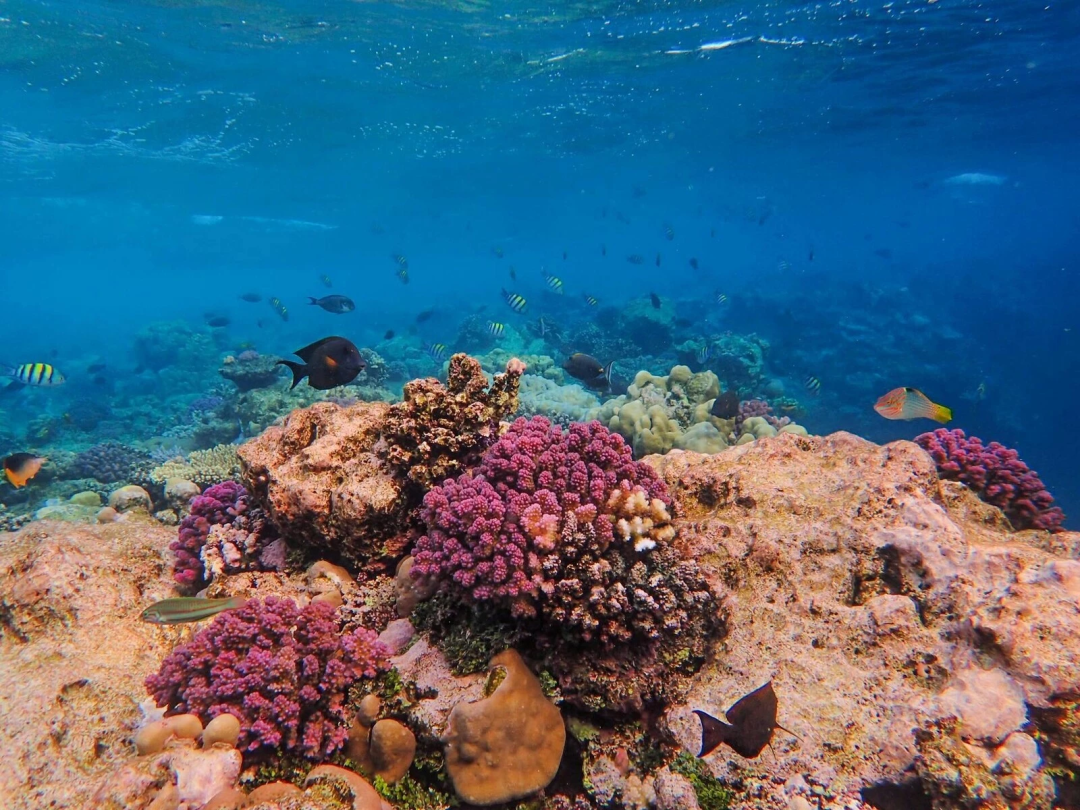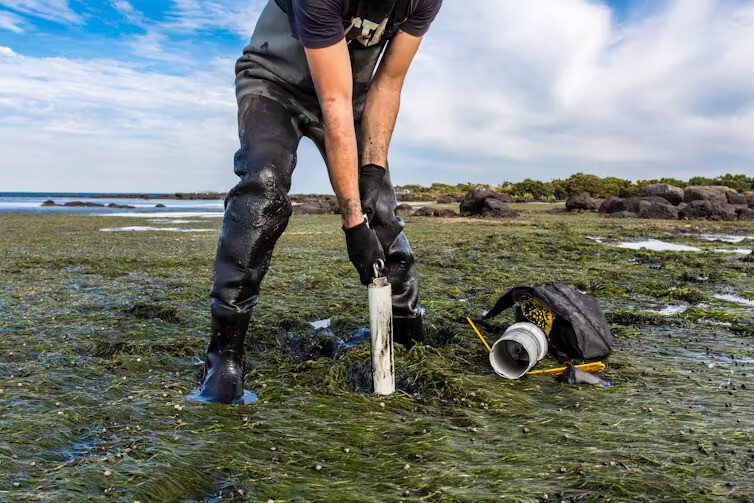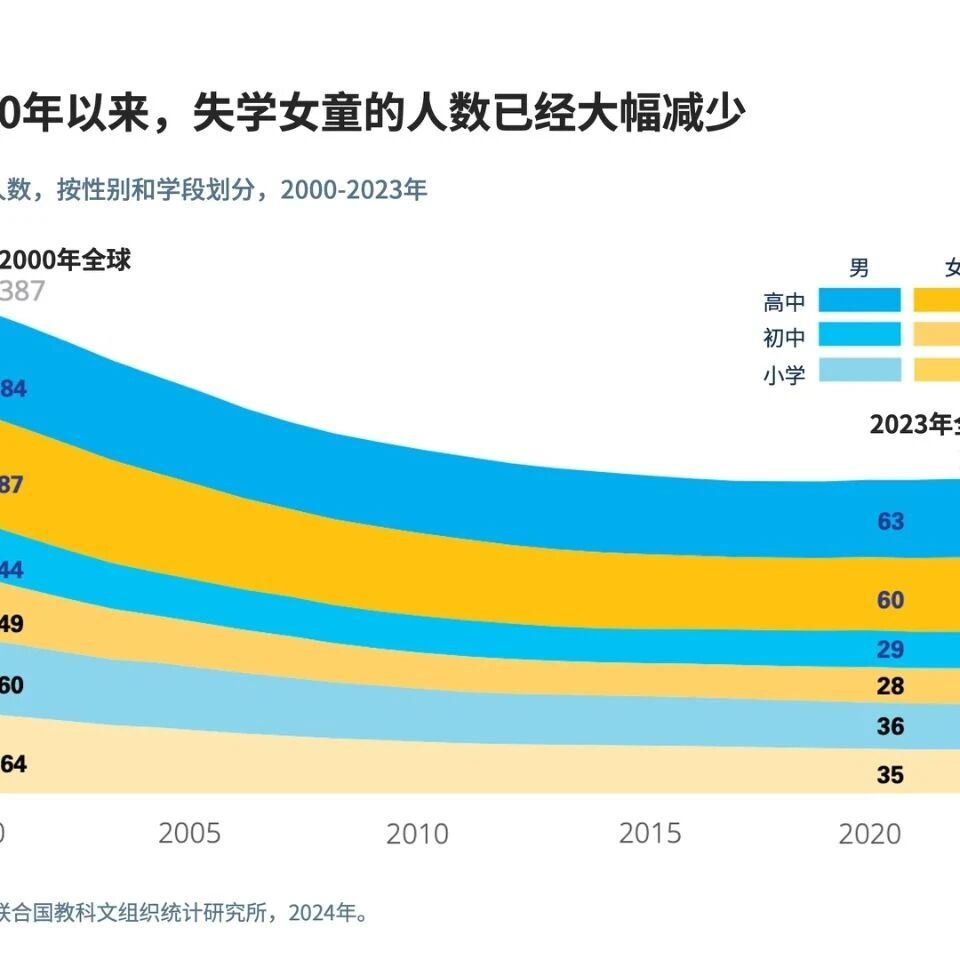The United Nations Decade of Ocean Science conference, held in Barcelona, launched a new sustainable ocean initiative.
Image source:Pexels/Francesco Ungaro
William Austin
Professor at the University of St Andrews
The ocean floor can store vast amounts of carbon—a little-known fact that holds the key to tackling climate change.
Human activities such as deep-sea mining and bottom trawling pose threats to unlocking the ocean floor's full potential.
The "Ocean Decade" (2021–2030) is the United Nations’ initiative aimed at better managing ocean resources and safeguarding “blue carbon” reservoirs.
"Our Science, Our Ocean" is the slogan for the UN’s “Decade of the Ocean” (2021–2030) initiative. The "Decade of the Ocean" held its first dedicated conference in Barcelona, Spain.Marine scientists and global leaders from around the world have gathered in Barcelona to jointly review the progress of this initiative in enhancing ocean health and boosting marine biodiversity—while also exploring innovative ways to better protect the ocean floor, a realm we still know far too little about.Some sediments on the ocean floor store vast amounts of carbon. Without stronger protection, destructive activities like bottom trawling could release this stored carbon back into the atmosphere.Following discussions, the Barcelona meeting launched a new Sustainable Ocean Planning Initiative, which will be coordinated by Julian Barbière, the Global Coordinator of the "Ocean Decade." This initiative aims to encourage countries to implement sustainable management practices across all maritime areas under their jurisdiction.Building on this, we can also rethink the ocean's role in the broader climate system and recognize that all marine natural systems are capable of absorbing and storing carbon in soils and sediments.The UN's Global Ocean Decade Blue Carbon Initiative—where "blue carbon" refers to carbon stored in the ocean—is one of 50 transformative ocean science programs aimed at delivering sustainable development solutions and reconnecting humanity with the sea. It’s no small feat.Coastal ecosystems such as mangroves, salt marshes, and seagrass beds possess remarkable abilities to absorb or store carbon at exceptionally high densities. The Blue Carbon Team, an international group of researchers from more than 20 countries, is now turning its attention to emerging blue carbon ecosystems—like kelp forests and subtidal sediment deposits—as a powerful solution to tackle the climate and biodiversity crises.From coastal seagrass meadows to the sediments slowly accumulating in the deepest ocean trenches, the ocean floor—spanning an area of 360 million square kilometers—is a vital carbon reservoir, yet its critical role has been severely overlooked. The oceans store vast amounts of carbon; it’s estimated that the top layer of the ocean floor alone holds as much as 2.3 trillion metric tons of carbon.The ocean floor is not an inexhaustible resource—it is, rather, a fragile global biodiversity hotspot and carbon reservoir that urgently needs protection. Unfortunately, relentless development in coastal regions worldwide has already severely impacted these highly productive yet vulnerable ecosystems, leading to habitat loss and destructive activities—such as the clearing of mangroves for shrimp farming.Blue carbon holds immense potential to deliver ocean-based solutions for mitigating climate change. Fortunately, at least globally, losses have begun to decline in recent years.Blue carbon holds relatively limited potential for greenhouse gas reduction, but restored healthy ecosystems could potentially sequester an additional 2.96 million tons of carbon each year. Countries like Indonesia are particularly well-positioned to become blue-carbon hotspots. In these nations, safeguarding and rehabilitating natural environments will not only benefit the environment but also create opportunities for local communities.Carbon sinks turn additional carbon emissions into a source of income for community investments, attracting growing interest. Along Kenya’s coastline, the community-based Miko Pamojo project is delivering greater direct benefits to local people by restoring mangrove forests.Collect sediment cores to assess carbon storage in seagrass beds.
Image source: I. Noyan Yilmaz/Shutterstock
Blue carbon ecosystems can help countries meet their climate commitments and have already captured significant international interest. However, to ensure these ecosystems continue delivering a range of vital services, governments must prioritize conservation efforts and, whenever possible, restore any lost habitats.Governments in most countries have historically not prioritized ocean-based solutions on the global climate negotiation agenda. At the meeting, UNESCO Director-General Audrey Azoulay, among others, highlighted the critical need to protect and effectively manage marine resources.Members of the Great Barrier Reef’s traditional owners share a deep connection with the ocean, offering their perspectives on “the nation” from the lens of a long-standing, sustainable relationship between humans and nature. Increasingly, these Indigenous knowledge systems are being recognized and respected, with growing awareness of the need to integrate them into a sustainable marine future.Reimagining the Role of the OceanProtecting fragile natural systems that store carbon is smart risk management.Countries continue to exploit marine resources such as fish and fossil fuels, and in some regions, even excavate for precious metals on the ocean floor. Now is the time to rethink the ocean’s value as a vast natural carbon sink.While the ocean receives far less funding than space science, vast unexplored deep-sea regions still lie waiting to be surveyed around the globe. To date, "underwater life" remains the least-funded of the United Nations' 17 Sustainable Development Goals. To change this reality, we must steadily increase investments in marine science and deepen our understanding of the blue economy's immense value. According to the UN definition, the blue economy involves the sustainable use of ocean resources to drive economic growth, improve livelihoods, and create jobs—while safeguarding the health of marine ecosystems for future generations.Stopping the destruction and protecting existing marine resources can benefit both humanity and the planet, enhancing resilience and fostering a healthier, more sustainable ocean environment. The seafloor forms the foundation of interconnected marine ecosystems and plays a critical role as a global carbon sink over the long term, influencing exchanges between the ocean, atmosphere, and the broader Earth system.Although we're moving in the right direction, significant challenges still lie ahead. Cynthia Barzuna, Director of Ocean Action at the World Resources Institute for 2030, says, "Without healthy oceans, there can be no economic prosperity." The biggest takeaway from the Barcelona conference is that a sustainable future for our oceans requires us to share a common vision—benefiting both humanity and marine life as a whole.This article is co-published with The Conversation and originally appeared on the Agenda blog of the World Economic Forum.The Chinese version is for reference only.Feel free to share this on WeChat Moments; please leave a comment below the post if you’d like to republish.
Translated by: Di Chenjing | Edited by: Wang Can
The World Economic Forum is an independent and neutral platform dedicated to bringing together diverse perspectives to discuss critical global, regional, and industry-specific issues.
Follow us on Weibo, WeChat Video Accounts, Douyin, and Xiaohongshu!
"World Economic Forum"






